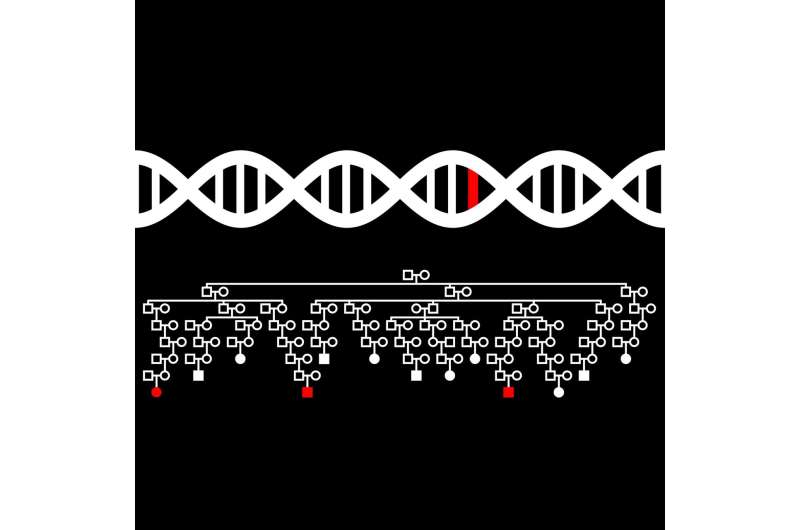Changes in genes involved in DNA repair and packaging linked to risk of multiple myeloma

Researchers have identified two gene regions that contribute to multiple myeloma, an inherited cancer that occurs in bone marrow, through a new method that makes use of human disease pedigrees. Nicola Camp and Rosalie Waller of the Huntsman Cancer Institute at the University of Utah, and colleagues, report their findings February 1st, 2018, in PLOS Genetics.
Human pedigrees can help geneticists to track diseases through different branches of a family tree and pinpoint the mutations that are responsible. This process is straightforward in diseases caused by a mutation in a single gene, but for complex diseases, which involve multiple genes, the use of pedigrees has not been so effective. In the current study, researchers developed a new method to analyze high-risk pedigrees (large, multi-generational families with more affected members than would be expected by chance) to identify shared regions of the genome that likely harbor disease-causing genes. They applied the method using pedigrees from 11 Utah families at risk of multiple myeloma, a complex, heritable cancer that causes malignant immune cells to proliferate in the bone marrow. The analysis revealed two regions that may contribute to the disease: one involved in regulating DNA repair, and the other, a key gene involved in packaging DNA inside the cell's nucleus.
The myeloma findings from the new study demonstrate that high-risk pedigrees, a classic design for straightforward diseases, can also be successful for pinning down genes that contribute to complex diseases with appropriate analytics. This new strategy may be helpful for narrowing in on the genetic causes underlying other common yet complex diseases, such as obesity, diabetes and Alzheimer's disease.
Nicola Camp adds: "We are very encouraged by the new method. It certainly plays to the strengths of the large Utah pedigrees, revitalizing the family design for complex diseases. As we did in this study, the focused regions can be further investigated in smaller families to find genes and specific mutations. The method can be used for any complex disease. We are already pursuing large pedigrees in several other domains, including other cancers, psychiatric disorders, birth defects, and pre-term birth phenotypes, with several more genome-wide significant regions found. We're excited about the potential."
More information: Waller RG, Darlington TM, Wei X, Madsen MJ, Thomas A, Curtin K, et al. (2018) Novel pedigree analysis implicates DNA repair and chromatin remodeling in multiple myeloma risk. PLoS Genet 14(1): e1007111. doi.org/10.1371/journal.pgen.1007111















